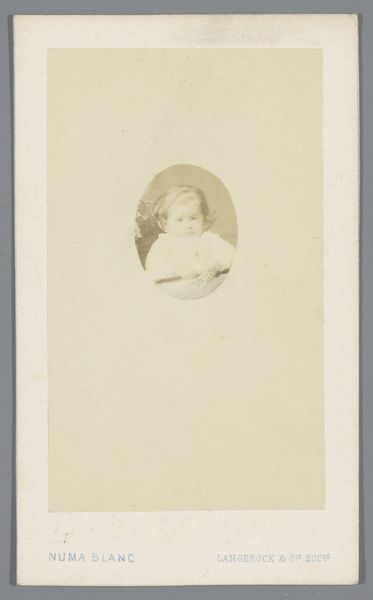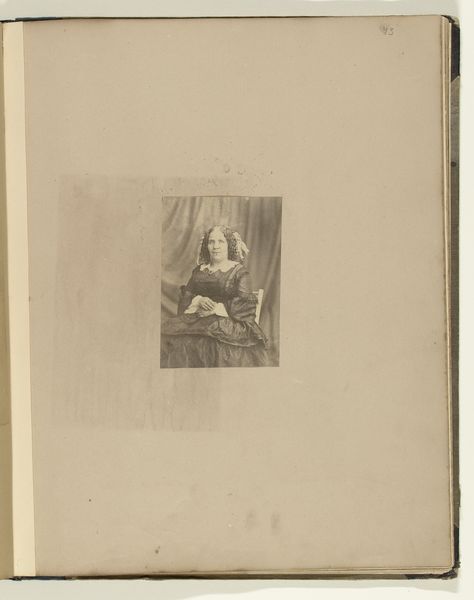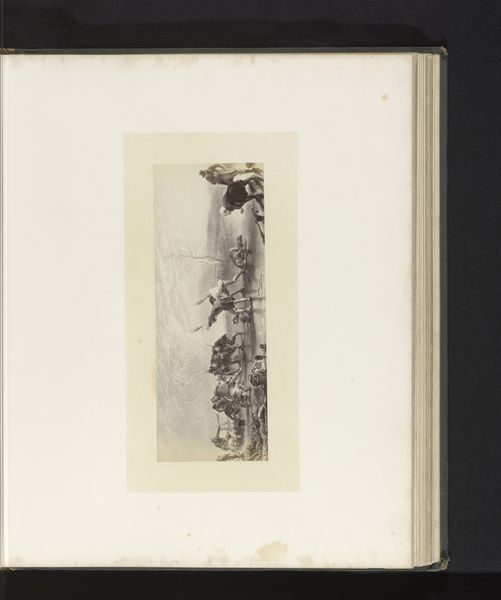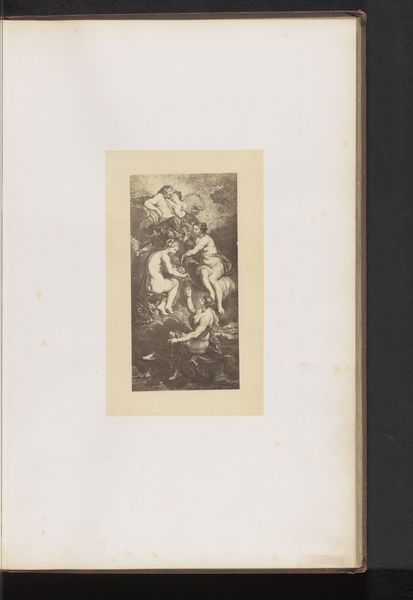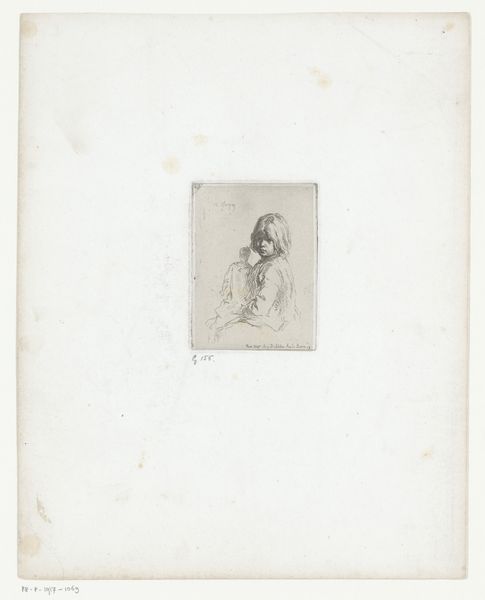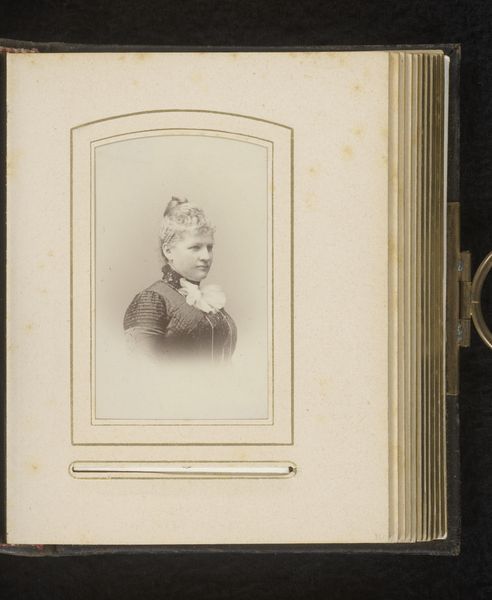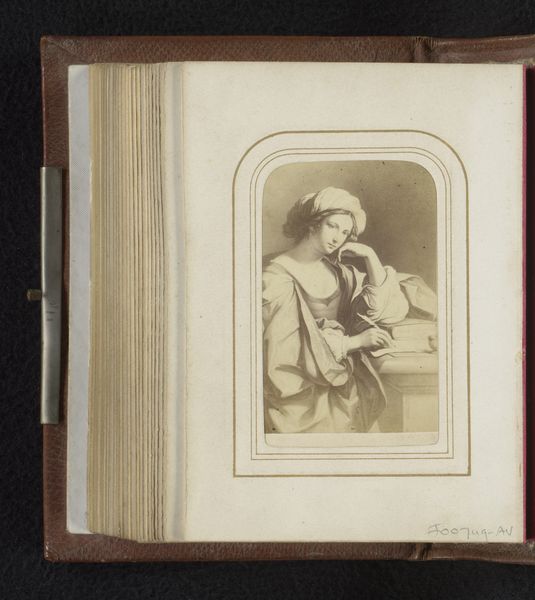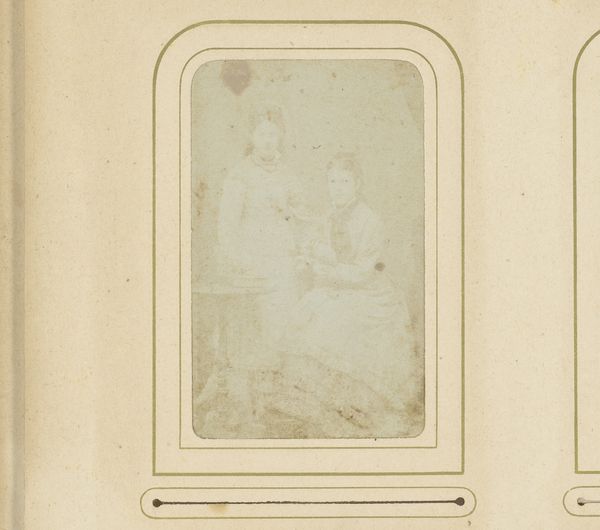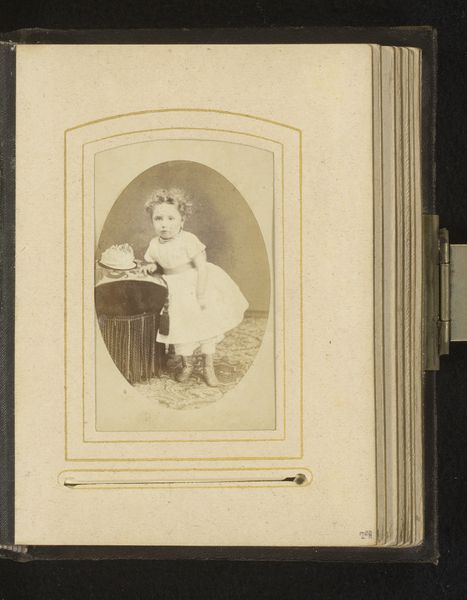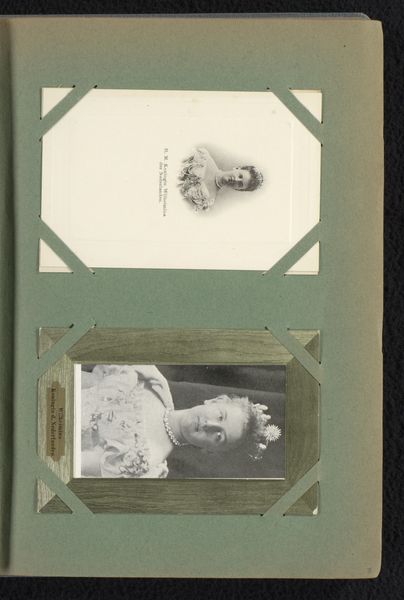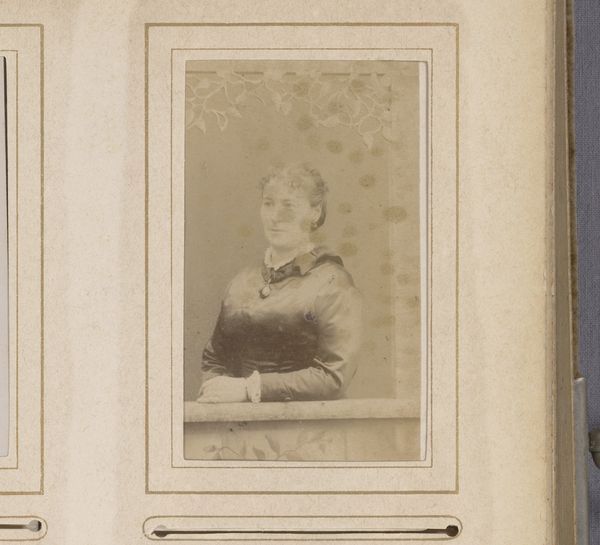
Fotoreproductie van een ets van een lezende vrouw door Rembrandt van Rijn before 1853
0:00
0:00
bissonfreres
Rijksmuseum
drawing, print, etching
#
portrait
#
drawing
# print
#
etching
#
figuration
Dimensions: height 123 mm, width 99 mm
Copyright: Rijks Museum: Open Domain
This is a photographic reproduction by Bisson Frères of an etching by Rembrandt van Rijn, created sometime in the mid-nineteenth century. At first glance, the image depicts a woman absorbed in reading, but it's also a document of shifting cultural values around art and its reproduction. In 19th century Europe, photography transformed how art was consumed and disseminated. Before photography, access to artworks was limited to those who could visit museums or private collections. Photography democratized art, making it accessible to a wider audience through reproductions like this one. It also raised questions about authenticity, authorship, and the role of the artist in an age of mechanical reproduction. Was a photograph of a Rembrandt etching still a work of art? Did it change our understanding of the original? The institutions of art—museums, galleries, and art schools—played a key role in shaping these debates and influencing how the public understood the value and meaning of art. Examining period sources like journals, exhibition catalogs, and critical essays can shed light on how photography reshaped the art world and transformed our relationship with the past.
Comments
No comments
Be the first to comment and join the conversation on the ultimate creative platform.

